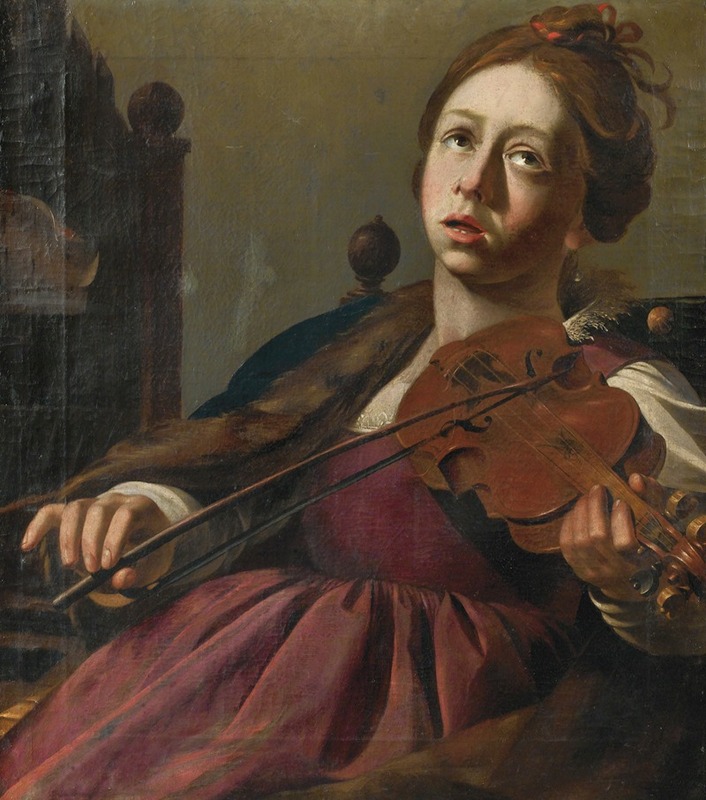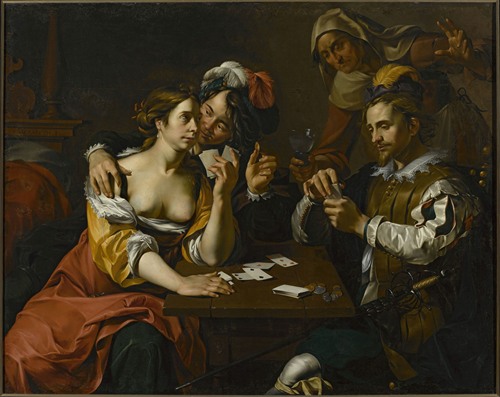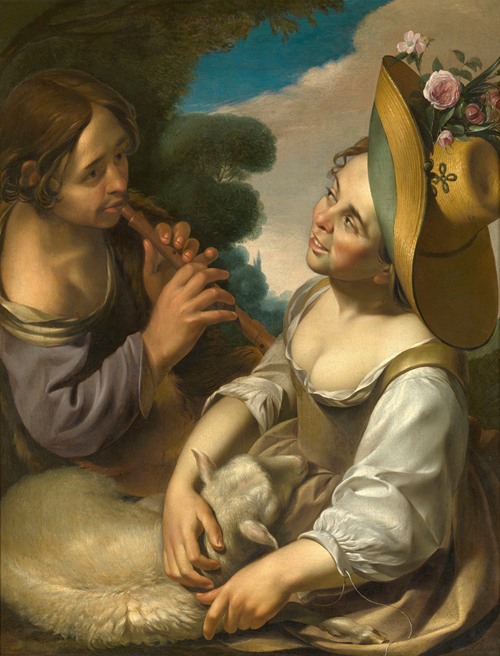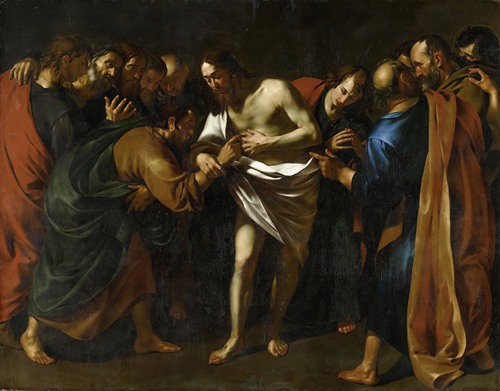

Wouter Pietersz. Crabeth II was a Dutch Golden Age painter.
Wouter Crabeth was born in Gouda in 1594, the son of the writer and politician Pieter Woutersz. Crabeth. He was named after his grandfather Wouter Crabeth I, who was a celebrated master glassmaker. Crabeth took an apprenticeship under Cornelis Ketel, who was a well known portrait painter in Amsterdam. It is possible that Crabeth was also a student of Abraham Bloemaert in Utrecht.
In 1613, Crabeth made his Grand Tour. Such a tour, ending in Florence and Rome, was considered a necessary rite of passage for completing a Flemish artist's classical education, ever since Karel van Mander's Schilderboeck was published in 1604. He was in Paris in 1615 and in Aix-en-Provence the following year. Then he travelled to Italy, where he studied the local masterpieces and worked at the various painting schools and workshops. In 1619, while in Rome, he became a member of the Bentvueghels, with other painters such as Cornelius van Poelenburgh, Bartholomeus Breenbergh, Wybrand de Geest and Leonard Bramer. They gave him the nickname "De Almanack" (The Almanac). Crabeth is represented in an anonymous drawing (see sidebar in top-right) drawn in 1620 and saved in the Museum Boijmans Van Beuningen in Rotterdam. Crabeth was then known as Wouter van der Gou (i.e. Wouter of Gouda); he was often seen together with other members of the Bentvueghels.
In 1626, he returned to Gouda as a schutter (soldier). In 1628, he married the mayor's daughter, Adriana Gerritsdr Vroesen. The same year, at the time that his own father became mayor, he was named captain of the Schutterij, a function which he continued until his death in 1644. In this role, in 1629, he took part in the Siege of 's-Hertogenbosch.
Before that, he received an order from curate Petrus Purmerent for two altarpieces for the Catholic Church of Saint-Jean-Baptiste (later the Old Catholic Church) and Catharinagasthuis, a religious community. These two paintings are currently held in the nl:Museum Gouda (nl:Museum Het Catharina Gasthuis) in Gouda and the Rijksmuseum of Amsterdam. The two works – The Assumption of the Virgin Mary (Ten-Hemelopneming van Maria) and Doubting Thomas (Ongelovige Thomas) – show a strong Italian influence, and are stylistically close to Caravaggio. In 1631 and 1641, Crabeth painted another two altarpieces for the Church of Saint-Jean-Baptiste, which are also at the Museum Gouda.
As well as altarpieces, Crabeth often painted card players and shepherds, which are very close in spirit to the works of Caravaggio. These tableaux were mostly painted after his return to Gouda. Only a small number of these works remain.
Wouter Crabeth was succeeded by his students Jan Ariens Duif, Dirk de Vrije, Jan Govertsz Verbijl, Jan Verzijl and Aert Van Waes. Crabeth was the most important Dutch Golden Age artist in the town of Gouda.



